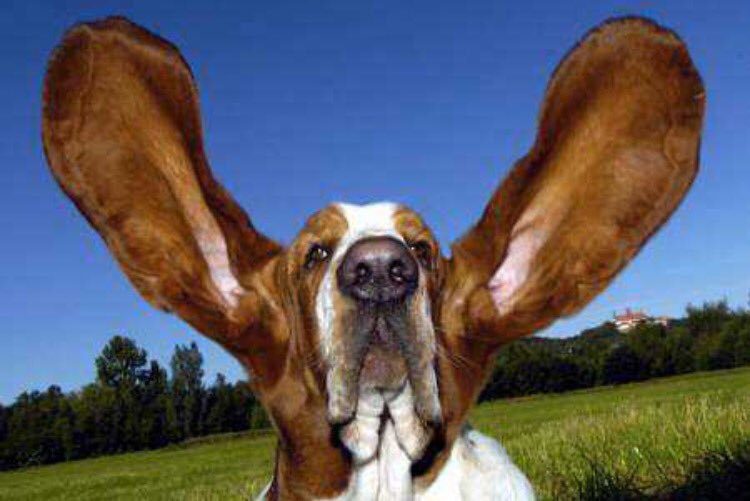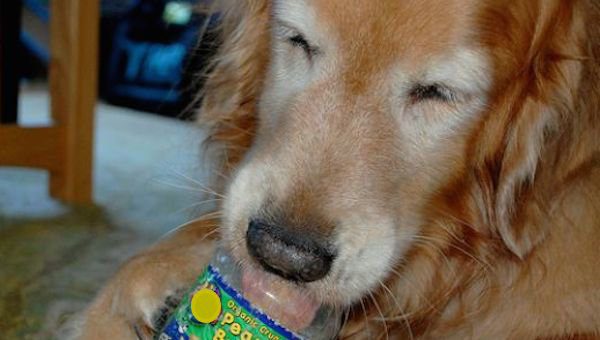How to Identify Periodontal Disease in Dogs
Dental care is important to maintaining your dog’s overall health, and if not tended to regularly, can lead to medical complications and disease. More than 85% of dogs and cats older than four years have some level of periodontal disease. Periodontal disease (periodontitis) is the inflammation of some or all of the structures that support the teeth. These include the gingival, cementum, periodontal ligament and alveolar bone.

Periodontal disease starts with the formation of plaque, which starts forming twelve hours after dental cleaning. If the plaque is not removed, mineral salts in the food precipitate to form hard dental calculus.
The calculus is irritating to the gingival tissue (the gums). It also changes the ph balance of the mouth allowing bacteria to survive and flourish. By-products of these bacteria “eat away” at the tooth’s support structures and can lead to other diseases.
As periodontal disease progresses a painful infection between the tooth and the gum develops that results in tooth loss and spread infection to the rest of the body. Signs are loose teeth, bad breath, tooth pain, sneezing and nasal discharge.
Usually the first sign of a mouth problem is halitosis or bad breath. It is caused by bacteria growing from food particles caught between the teeth or by gum infection. Over time the plaque and calculus irritates the gum tissue leading to gingivitis.
Gingivitis is an inflammation of the gums caused mainly by accumulation of plaque, tartar and bacteria above and below the gum line. Signs include bleeding, red, swollen gums and bad breath. Thankfully it is reversible with regular teeth cleanings.
However, if gingivitis is bad, periodontal disease (periodontitis) is bad too, as the two usually go hand-in-hand. Periodontal disease can only be controlled, not cured.
That is why the primary combatant to periodontal disease in dogs is regular brushing and cleaning. Daily brushing of your dog’s teeth will go a long way in maintaining your dog’s overall oral health, as well as reduce the discomfort and complications that come with periodontal disease such as:
- Foul breath (halitosis)
- Inflamed/swollen gums
- Pain
- Drooling
- Difficulty chewing
- Anorexia
- Loss of weight and muscle mass
More serious outcomes from periodontal disease include:
- Heart disease
- Kidney disease
- Liver disease
These more serious diseases are caused when the bacteria that live in the infected gum tissue enter the bloodstream. Once in the blood stream, the bacteria lodge in crevices with the kidneys and liver and on the valves of the heart.
Liver inflammation as well as scarred, poorly functioning kidneys are the result of bacteria lodging in these organs. When the heart valves are attacked by bacteria they shrink and scar causing blood to flow in the wrong direction. This is why it is common for dogs with severe dental disease to have heart murmurs.
Some individual dogs may be predisposed genetically to develop dental disease at a younger age or experience more severe dental problems. Also small breeds and brachycephalic breeds are more prone to oral disease because the teeth are closer together, the smaller animals live longer, and for yet unknown reasons.
Stages of Periodontal Disease in Dogs
There are two grading systems commonly used to classify the degree of periodontal disease.
One is the mobility index which gages the looseness of a tooth. There are three levels or “classes”.
Class I
A tooth moves less than the distance of its crown width.
Class II
A tooth only moves slightly.
Class III
A tooth moves a distance greater than its crown width. Teeth will have lost more than 50% of their support and most likely will need to be extracted.
The more common grading system uses grading system from 1 to 4 based on the condition of the gums and how much tartar and decay can be detected.
Grade 1
Plaque is the transparent film of bacteria cells and food particles that forms on the surfaces of teeth. Bad breath and reddening and inflammation of the gum line (gingivitis) occur even though the teeth appear “clean”.


Grade 2
Within 72 hours dental plaque can begin to calcify, forming tartar. Increased inflammation and swelling will be visible on the gum line.


Grade 3
Tartar is covered with newly formed plaque. There’s further inflammation of the periodontal tissues along with some loss of tissue attachments and the beginnings of bone loss.


Grade 4
Left untreated gingivitis may progress to infect the surrounding tissue with tooth loss, gum recession and bone loss.


In order to keep your dog’s periodontal disease within the manageable Grade 1 and 2 levels, be sure to check your dog’s mouth regularly to identify if there are any problems with your dog’s teeth or gums. By familiarizing yourself with identifying the common problems you may encounter, it will help you determine if it’s time to see a vet, and/or get a professional teeth cleaning for your dog.
Just as with humans, dogs need to visit the dentist regularly, especially as they get older.
Veterinarians will recommend that dog’s teeth be professionally cleaned (ultrasonically cleaned) once every year to few years, depending on the severity of periodontal disease in order to maintain healthy teeth and prevent tartar and gingivitis. Ultrasonic cleaning requires general anaesthesia because the noise is distressing to animals, and cleaning is vigorous.
Be sure to consult with your veterinarian and make dental care part of your dog’s annual general health check up. And don’t forget the key preventative to periodontal disease is brushing a dog’s teeth regularly. Read our article on How To Brush Your Dog’s Teeth.
Take care of your dog’s teeth with dog toothbrushes, dog toothpastes
and oral care products
.
Disclosure: This article contains affiliate links. As an Amazon Associate, we may earn a small commission from qualifying purchases made via these links.






